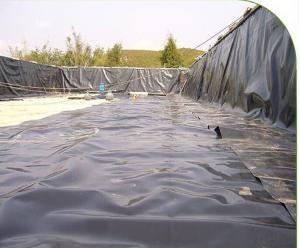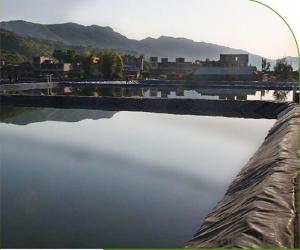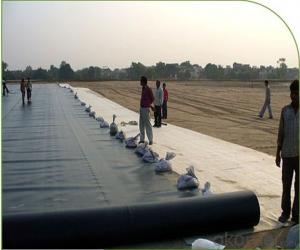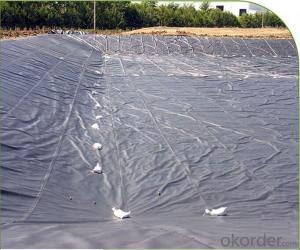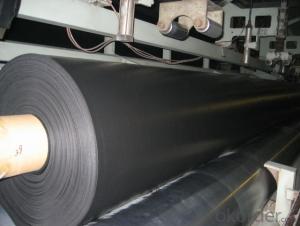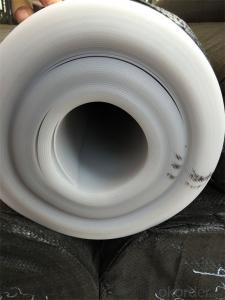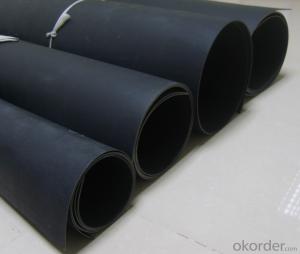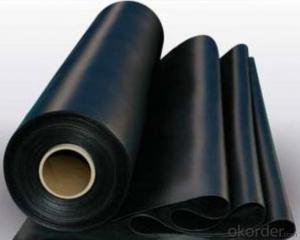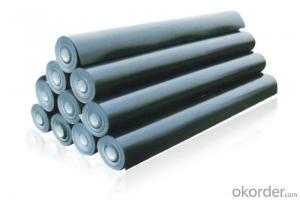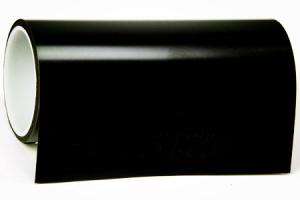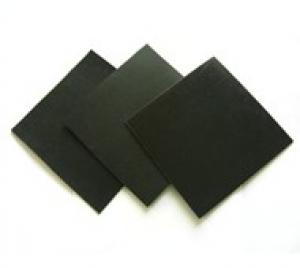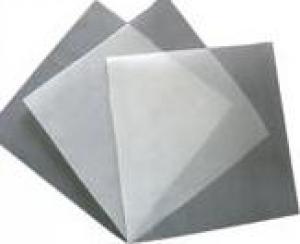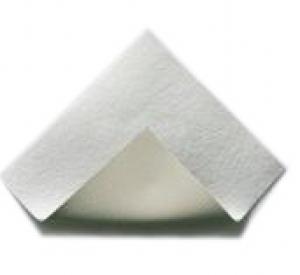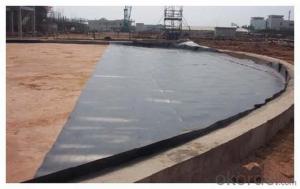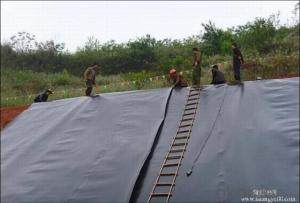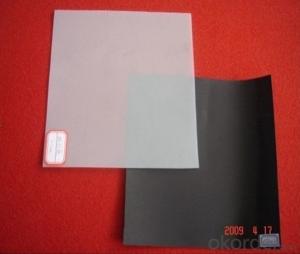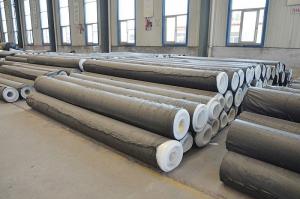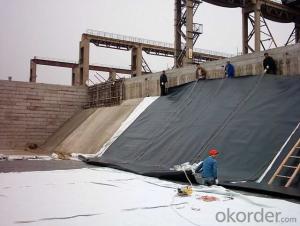ASTM HDPE Geomembrane for Aquiculture and Landfill Project Use
- Loading Port:
- Tianjin
- Payment Terms:
- TT or LC
- Min Order Qty:
- 5000 m²
- Supply Capability:
- 200000 m²/month
OKorder Service Pledge
OKorder Financial Service
You Might Also Like
HDPE Geomembrane Detail Specifications:
Type: | Geomembranes | Place of Origin: | Shandong, China (Mainland) | Brand Name: | CMAX |
Model Number: | 0.1mm-4.0mm | Material: | EVA, HDPE, LDPE, LLDPE, PVC, HDPE | Thickness: | 0.1mm - 4.0mm |
Color: | white, black, red ect. | Roll width: | 1m-8m | Roll length: | 50-100m |
MOQ: | 100 m2 | Certification: | CE/ISO9001/ ISO14001 | Sample: | available for free |
Package: | by PP woven bag | Payment: | by T/T |
HDPE Geomembrane Feature:
--Good mechanical properties
--High tear strength, deformation and adaptable, puncture resistance,
--Anti-aging, anti-ultraviolet-resistant,
--Anti oil and salt, pH, anti-corrosion, high temperature-resistant, non-toxic, long service life. water,
--Drainage, seepage, the good effect of moisture, width, thickness of the full range of specifications
and low cost, simple construction.
HDPE geomembrane Application:
1) Environmental protection sanitation (such as solid waste landfills, sewage treatment plants, power plants Chi-conditioning, industrial, hospital solid waste, etc.) .
2) Water (such as rivers, lakes and reservoirs of the anti-dam, plugging, reinforcement of the canal seepage, the vertical wall of the heart, slope protection, etc.).
3) Municipal Engineering (subway, on the ground floor of the building, planted roof, the roof garden of anti-seepage, sewage pipes lining, etc.).
4) Landscape (man-made lake, river, reservoir, golf courses reservoirs of the substrate, slope protection, green lawn of the waterproof moisture, etc.).
5) Petrochemical (chemical plants, oil refineries, gas storage tanks of the anti-chemical reaction tanks, sedimentation tanks of the lining, etc.).
6) Mining (washing and pool heap leaching, the ash-field, dissolved, precipitation, the yard, the tailings seepage substrates, etc.) .
HDPE Geomembrane Packaging & Delivery:
Packaging Details: | HDPE geomembrane are packed into roll in PP woven geotextile or as client' s request |
Delivery Detail: | in 10 days after receive advance payment |
HDPE Geomembrane Photos:
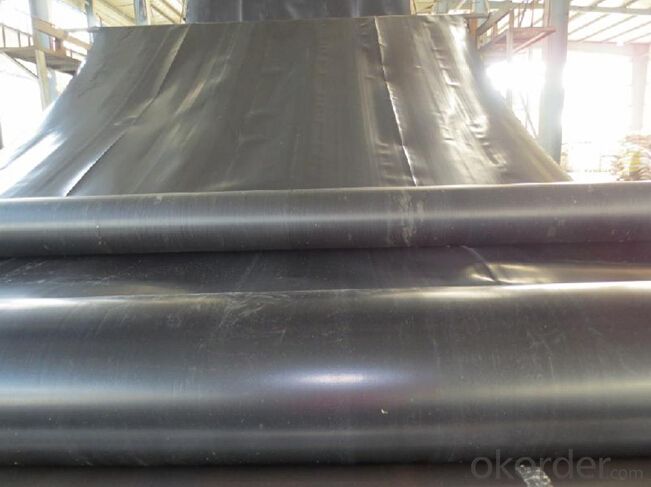
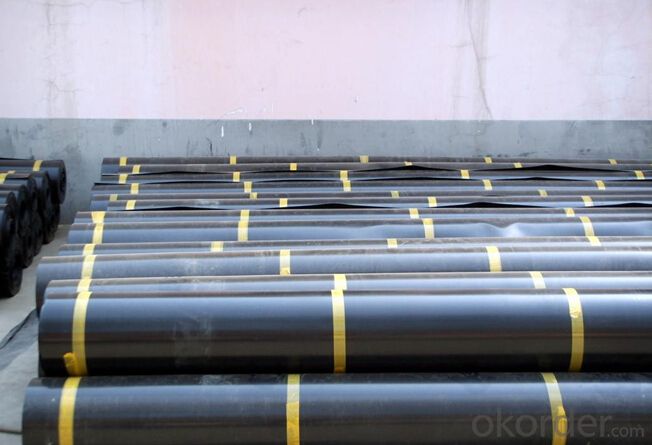
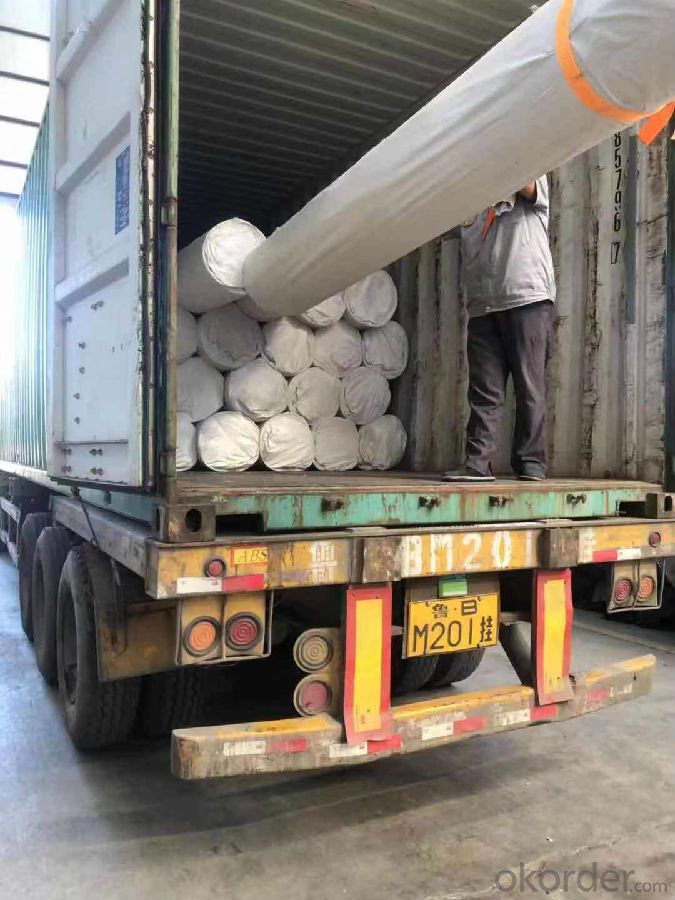
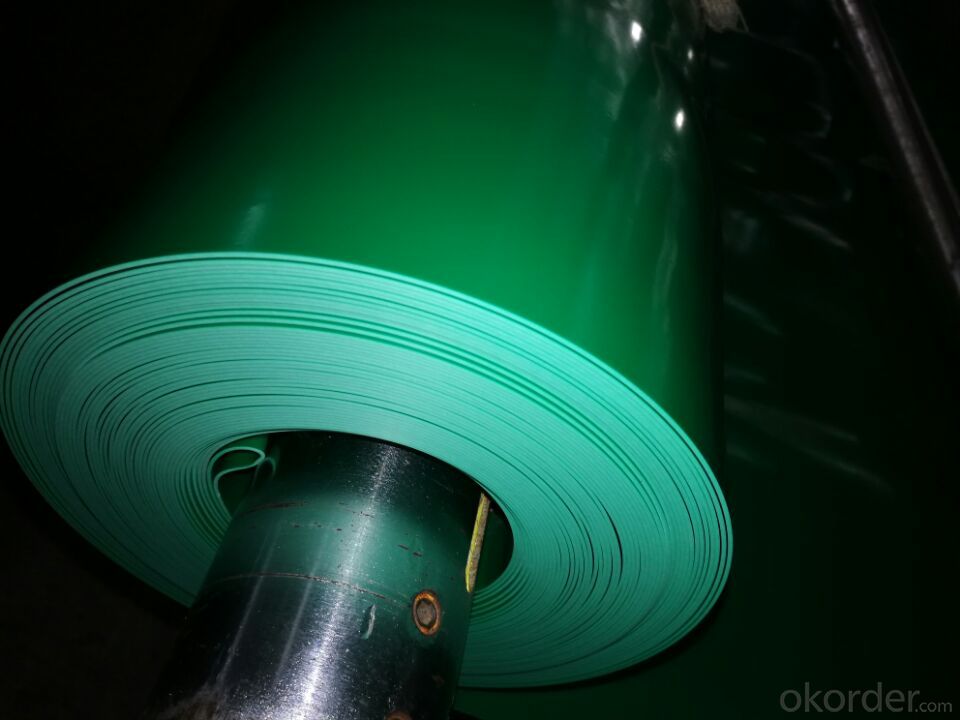
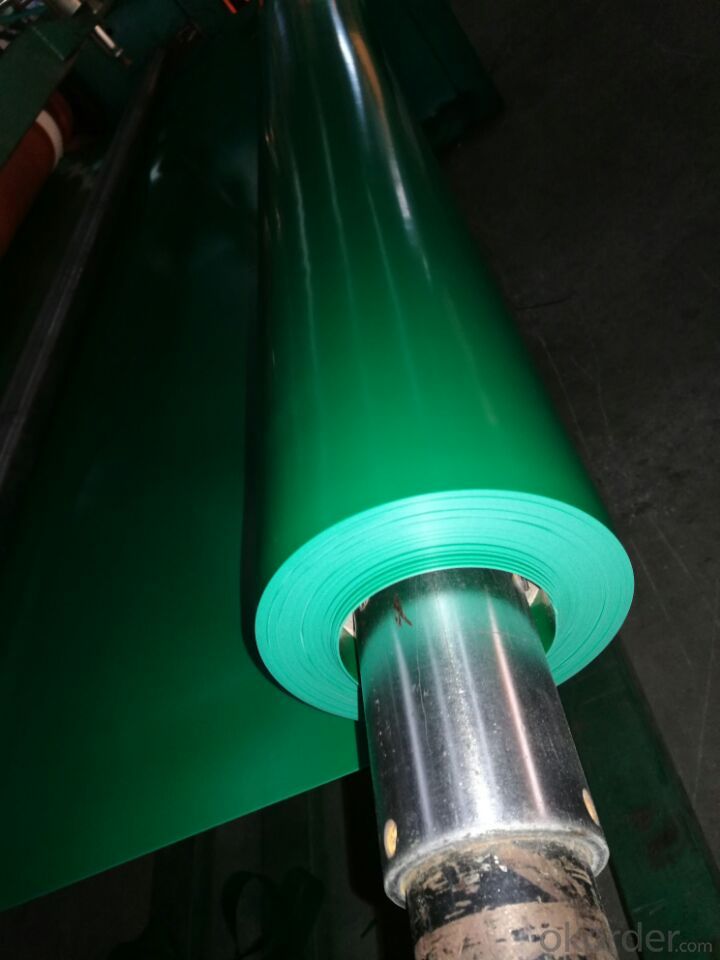
- Q:what's the pneumatic membrane valve mechanism?
- Pneumatic valve mechanism is using the compressed air driven gate, when gate is closed, the sealing surface can only rely on media pressure to seal, that is, to rely on medium pressure of the gate sealing surface pressure to the other side of the seat to ensure the sealing surface of the seal, which is self sealing. Most of the valve is forced to seal, that is, when the valve is closed, it should rely on external force to force the flashboard to the valvet seat, in order to ensure the sealing surface of the seal.
- Q:Which one should be used for dam protection, geomembrane or wire box?
- Wire box, of course. It has good protection effect and can prevent the dam from landslide, water loss and soil erosion.
- Q:How do geomembranes contribute to erosion control in riverbanks?
- Geomembranes are impermeable liners made of synthetic materials that are used to prevent water seepage and erosion in riverbanks. They act as a barrier between the soil and water, effectively reducing the impact of flowing water on the riverbank. By preventing water from infiltrating the soil, geomembranes protect the stability and integrity of the riverbank, minimizing erosion and reducing the risk of landslides or collapses. Additionally, geomembranes also help to control the flow of water, redirecting it away from vulnerable areas and preventing concentrated flows that can accelerate erosion. Overall, the use of geomembranes in riverbanks plays a crucial role in erosion control by providing effective protection against the erosive forces of water.
- Q:Can the mobile phone film be torn down
- It can tear down, if you use the non-adhesive protective film, the screen does not leave anything. If the film with glue, it will leave the glue when you tear down it. I can tell you a method to solve the problem: the cell phone that has been tore off the membrane puts into the jeans pocket (the screen must be exposed, straight \ slider), the screen will become clean after you hanging on the streets.
- Q:How do geomembranes perform in high temperature environments?
- Geomembranes perform well in high temperature environments due to their excellent heat resistance properties. They are specifically designed to withstand elevated temperatures without any significant deterioration in their performance. The material used in geomembranes, such as HDPE (high-density polyethylene), has a high melting point and can withstand temperatures up to 120°C (248°F) or even higher. This allows them to be used in various applications, including mining, oil and gas, and waste management, where high temperatures may be encountered. Moreover, geomembranes also provide excellent resistance to UV radiation, chemical exposure, and mechanical stress, further enhancing their performance in high temperature environments.
- Q:How do geomembranes contribute to the prevention of soil erosion in mining operations?
- Geomembranes are impermeable barriers made of synthetic materials that are used in mining operations to prevent soil erosion. They are installed in areas where there is a high risk of erosion, such as slopes, embankments, and containment ponds. By creating a barrier between the soil and water, geomembranes effectively minimize the contact between the two, preventing water from eroding the soil and carrying away valuable minerals. This helps to preserve the structural integrity of the mining site, protect nearby water bodies from contamination, and ensure the overall sustainability of mining operations.
- Q:How do geomembranes perform in high humidity environments?
- Geomembranes perform well in high humidity environments as they are designed to be impermeable and resistant to moisture. They effectively prevent the diffusion of water vapor, ensuring structural integrity and preventing moisture-related issues such as mold growth and degradation.
- Q:What are the considerations for geomembrane installations in areas with high seismic activity?
- When installing geomembranes in areas with high seismic activity, several considerations should be taken into account. Firstly, selecting an appropriate geomembrane material that can withstand the potential ground movement caused by seismic activity is crucial. The material should have high tensile strength, tear resistance, and elongation properties to ensure its durability during earthquakes. Additionally, proper anchoring techniques and reinforcement should be employed to secure the geomembrane in place and prevent it from shifting or tearing. It is also important to consider the potential for ground liquefaction, which can occur during earthquakes, and take appropriate measures to mitigate its effects on the geomembrane installation. Lastly, regular inspections and maintenance should be conducted to monitor the integrity of the geomembrane system and address any potential damage or weaknesses caused by seismic activity.
- Q:What factors can affect the lifespan of a geomembrane?
- Several factors can affect the lifespan of a geomembrane. These include the quality of the material used, the installation method, exposure to harsh environmental conditions such as extreme temperatures or UV radiation, chemical exposure, mechanical stress, and proper maintenance and inspection.
1. Manufacturer Overview |
|
|---|---|
| Location | |
| Year Established | |
| Annual Output Value | |
| Main Markets | |
| Company Certifications | |
2. Manufacturer Certificates |
|
|---|---|
| a) Certification Name | |
| Range | |
| Reference | |
| Validity Period | |
3. Manufacturer Capability |
|
|---|---|
| a)Trade Capacity | |
| Nearest Port | |
| Export Percentage | |
| No.of Employees in Trade Department | |
| Language Spoken: | |
| b)Factory Information | |
| Factory Size: | |
| No. of Production Lines | |
| Contract Manufacturing | |
| Product Price Range | |
Send your message to us
ASTM HDPE Geomembrane for Aquiculture and Landfill Project Use
- Loading Port:
- Tianjin
- Payment Terms:
- TT or LC
- Min Order Qty:
- 5000 m²
- Supply Capability:
- 200000 m²/month
OKorder Service Pledge
OKorder Financial Service
Similar products
New products
Hot products
Hot Searches
Related keywords

